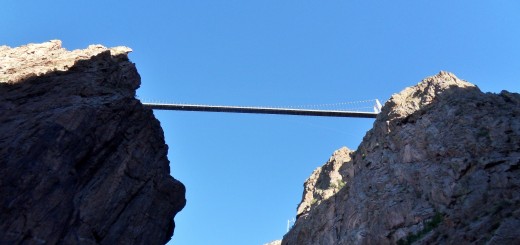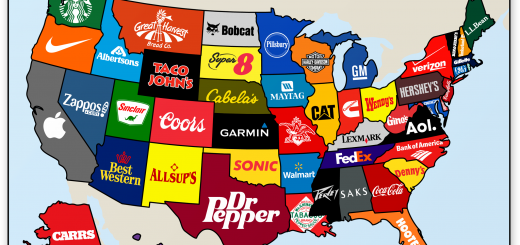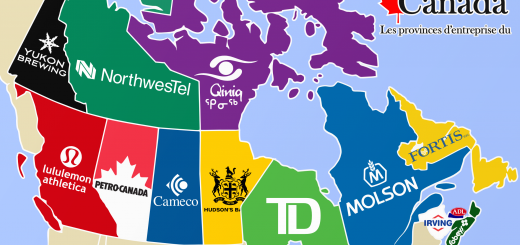Atchafalaya: The Future Mississippi River
 Right on the southwest corner of the State of Mississippi, there is a confluence of rivers. The Red River, which separates Texas from Oklahoma, meets up with the Mighty Mississippi. A mile to two downstream, a third river splits off from the Mississippi. This is the Atchafalaya River, a distributary river cutting through the heart of Cajun country. But if/when Mother Nature has its way, the Atchafalaya will become the main course of the Mississippi, cutting off both Baton Rouge and New Orleans from the mighty river. This is a distinct possibility, and when it happens, it will be a worse economic catastrophe than Hurricane Katrina.
Right on the southwest corner of the State of Mississippi, there is a confluence of rivers. The Red River, which separates Texas from Oklahoma, meets up with the Mighty Mississippi. A mile to two downstream, a third river splits off from the Mississippi. This is the Atchafalaya River, a distributary river cutting through the heart of Cajun country. But if/when Mother Nature has its way, the Atchafalaya will become the main course of the Mississippi, cutting off both Baton Rouge and New Orleans from the mighty river. This is a distinct possibility, and when it happens, it will be a worse economic catastrophe than Hurricane Katrina.
Dancing Rivers
The Red River used to run all the way to the Gulf of Mexico, running parallel to the Mississippi River. Then, around 500 years ago, the Mississippi meandered into the Red River and overwhelmed it. At that point, the northern part of the Red River became a tributary of the Mississippi, while the southern half of the old Red River became the Atchafalaya.
When white American settlers took over the region, they found their steamboats took a long time to go through this messy confluence of rivers, so a riverboat captain named Henry M. Shreve built a canal to make it easier to get through the region. This canal helped with navigation, but it also directed a lot more water into the Atchafalaya, deepening and widening the river. The result was a shorter, straighter and steeper outlet to the ocean. This drew more water into the Atchafalaya, which in turn became an even bigger river able to handle more water. This would be fine if the area was uninhabited, but it’s not. Most of the existing infrastructure of the State of Louisiana is built along the current outlet of the Mississippi, and if the river changes course, the shipping routes for a large chunk of the country will be destroyed as the old Mississippi silts up into a backwater bayou.
The Old River Control Structure
After World War II, the Army Corps of Engineers realized there was a disaster brewing on the river, so they built a series of dams called the Old River Control Structure. They measured the outflow the of the river system and found that 70 percent of the water went down the Mississippi while 30 percent went into the Atchafalaya. Then they built a series of dams and spillways to keep this 70/30 split.
Since the complex was built in 1963, it has withstood two major floods, in 1973 and 2011. However, both of these floods came close to overwhelming the whole system. And as the constant flow of water continues, erosion causes havoc with the whole river flow. It’s a classic Man vs. Nature problem. We can control the river only at a few key points, like Old River and the Morganza Spillway. This seems impressive, but Nature works its magic on every square inch of the river. We can’t stop erosion and silting in the whole hydrological system, so we better prepare for the worst.
The Catastrophe
This is how it’ll happen. The river will flood, as it does every few years, and the Army Corps with open the sluices and fill the spillways. But the water will keep on coming, quickly eroding the soft, silty soil. In a matter of days, or even hours, the flow into the Atchafalaya River will increase beyond our ability to control it. Once this does, the Atchafalaya River will instantly cease to exist. Instead it will just be the new Mississippi Delta. The old Mississippi, deprived of water, will capture the silt from upriver, until the entire course is just a creek or bayou. Dredging won’t help at this point, since there won’t be enough water to form a shipping channel. Every warehouse and port facility from Angola to the ocean will dry up overnight. Barges will be beached, and boats upriver will be stuck in place until the new Atachafalaya shipping channel can be dredged and made safe for riverboat traffic. This will affect the economy of Louisiana and every major city upstream: Memphis, St. Louis, Minneapolis, even Pittsburgh. And despite our best efforts, this isn’t a matter of “if”; it’s a matter of “when”.
Embrace the Atchafalaya
Humankind has invented some awesome technology in the last few centuries, but we’re still very much at the mercy of our environment. In a Man vs. Nature fight, always bet on Nature. Rather than trying to control the river, we should accommodate it. The government at all levels should try to spur development along the Atchafalaya. We should build new shipping facilities along the new course of the river while weening Baton Rouge and New Orleans off their current economic models. Then, at some point in the future, we can open the flood gates and let nature take its course. In the end, this would be best, from both an ecological and economical perspective.








They nearly lost the Morganza in 1973. Since then the ACE have been trying to keep the channel deeper past that spillway so the Miss. will flow faster towards the Gulf. I believe the Corps knows the river will eventually revert back to the Achafalaya because after Katrina they said the region would be better served by clearing out the flooded sections of all buildings and turning those into flooded basins to hold barges with warehouses along the raised banks. They figured that they could keep the channel dredged deep enough for barge traffic up to Baton Rouge and for ocean going vessels further south.
Great article.I have long believed that the best course of action on this problem would have been to allow nature to take its course and invest in infrastructure on the Atchafalaya rather than trying to control the Missississippi. Had that choice been made in the 50’s ,Louisiana would now have a much deeper and more easily maintained port .